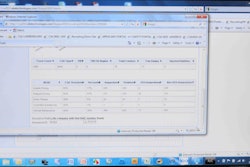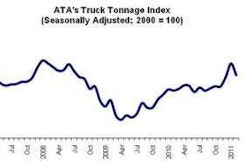UTi Worldwide Inc. on Thursday, March 24, reported revenues for its fiscal 2011 fouth quarter were $1,145.1 million, an increase of 15 percent from $991.5 million for its fiscal 2010 fourth quarter. Net revenues – revenues minus purchased transportation costs – were $404.5 million, an increase of 15 percent from $350.6 million. Operating income was $26.0 million compared to $11.8 million. Net income attributable to UTi Worldwide Inc. was $14.5 million compared to $1.5 million.
“Airfreight volumes increased more than we anticipated, while ocean freight volumes contracted in the fourth quarter against more challenging comparatives in the same period last year,” said Eric Kirchner, chief executive officer of the Long Beach, Calif.-based company. “Yields and net revenue per unit in the fourth quarter generally improved over last year and the previous quarter as carrier spot rates moderated, particularly in ocean freight.”
Kirchner said contract logistics and distribution revenues were up in the fourth quarter, due to both an increase in existing business activity and new business wins. “Operating expenses grew at a slower rate than net revenue, despite the fact that we incurred $2.6 million in costs associated with our new financial system,” he said. “Our operating margin improved in the fourth quarter of fiscal 2011 over the same period last year, but it still remains below our long-term target.”
Revenues and net revenues increased 15 percent primarily due to the increased airfreight and logistics volumes, as well as higher fuel surcharges. The substantial increase in volumes and carrier rates required significant additional working capital to fund duties and carrier costs on behalf of clients; net cash provided by operations totaled $72.9 million compared to $120.0 million.
Kirchner said the company anticipates modest volume growth in fiscal 2012, consistent with overall market forecasts, though the increase in the first half of the year is expected to be muted when compared to last year’s strong growth rates. He said the first quarter of the year also may be dampened by higher fuel costs, harsh winter weather, geopolitical events and the near-term disruption caused by the tragic events in Japan.
“These near-term challenges aside, we are still targeting growth ahead of a market which has returned to historical levels, and is more stable than we have seen in recent years,” Kirchner said. “The dynamics of supply and demand are more supportive of yield stability. And we continue to focus on operating efficiency, while we move forward aggressively in our transformation initiatives. These efforts are part of our strategy of achieving long-term growth and sustainable margin improvement.”














